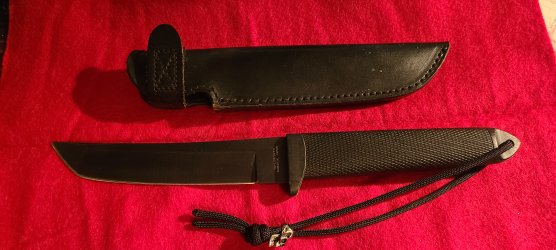kenpomaniac1958
Master Class
Thanks for the good words. I'm retired so I log in here pretty often. Feel free to message me or email me.Really enjoyed your comments and I agree with your assessment of knives in the real world. In my LEO career I worked in areas where the knife culture was alive and well. I saw a lot of stabbings and handled many homicides with the knife as the weapon. As a Marine, I spent some time in the Philippines so I know what you’re talking about with that technique/discipline very effective. Your classes sound very interesting and something that I would enjoy going through. I’m always eager to learn from other people to gain more knowledge. Feel free to message me privately on anything you feel would be helpful and that I can train on. Thanks for your input.
People from knife cultures(Filipino, Hispanic) have a code of respect. You earn their respect by being honest and controlling your fear. And also by being consistent. Another thing is that no matter how violent things get, you try to be as polite as possible. If you do that, you'll notice that down the road a person you were that way with tell others in the barrio that you're straight up guy. And that will help you in many good ways...
I don't like what knives can do to a body but I do enjoy knife training that includes trapping, sweeps, etc.. This is sometimes called "Tapi-Tapi" or Hubud in Escrima. In this kind of training understanding angles and entering at the right angle or exiting at a good angle that minimizes you getting cut. We learned to expect to get cut, while trying hard to avoid getting cut, if that makes sense.
I have had guys pull knives on me when I worked as an armed security officer. On one occasion, I created distance, drew my firearm, and watched the bad guy throw the knife on the ground and run Forrest run.
One time I was in a park in Reynosa, Mexico and the local guys didn't like how I could speak good Spanish for being a white boy(I'm adopted). They also didn't take too kindly to me flirting with some of the local senoritas. I was young and dumb and such. I barely made it to the border crossing. Never ran so fast in my whole life. I was lucky that day...
Good training will save you and you'll sometimes go on automatic pilot and do things you didn't realize you did until later.
I have pretty heavy hands from all the Boxing training I did before I got serious about martial arts training in the early '80's. Even at 64 years young I still have to monitor how hard I train students because I hit harder than I mean to.
My sifu's and guro's used to tell me, "Frank, you'll know your body mechanics are getting decent when you can hit hard without trying to." I still have a ways to go but I've enjoyed and enjoy the journey...
One of my favorite people and one of my instructors, guro Bob Orlando, a fellow Marine, died from ALS in 2016. He really helped me with my body mechanics and understanding techniques and such. Look him up on youtube, he's one of the best I've ever had the honor of training with. We'd train in martial arts and then joke about the Marine Corps...
I attended many guro Dan Inosanto seminars in the Dallas area in the 80's, 90's and early 2000's. Guro Inosanto is another great guy to watch on youtube. He's very good and very humble. He's also one of Bruce Lee's students and he trained with Ed Parker(I have a 4th degree black belt in Ed Parker Kenpo Karate...
I was on the USS Tripoli in Subic Bay PI in '77-'78(31st MAU). San Miguel Beer in Olangapo, what could go wrong...
Last edited:

